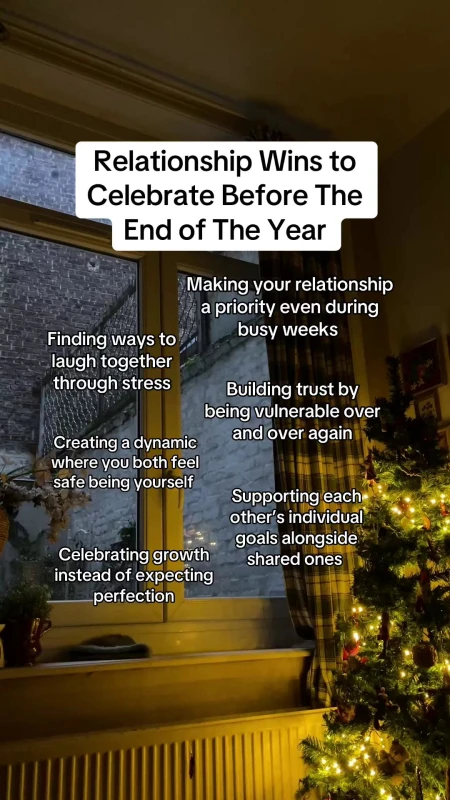ctive listening is a powerful tool for improving communication and connection in relationships. It’s about more than just hearing words - it’s about fully engaging with your partner’s emotions, tone, and body language to ensure they feel understood. When practiced consistently, active listening can reduce misunderstandings, build trust, and strengthen your relationship.
Core Techniques and Principles of Active Listening
Key Techniques for Effective Listening
Truly mastering active listening involves more than just staying quiet while your partner speaks. It allows you to both actively engage in a way that makes both of you feel understood.
Start by giving your full attention. Put down your phone, close your laptop, and focus entirely on your partner. Simple gestures like maintaining eye contact can communicate that their words and emotions matter to you.
Paraphrasing is another important tool. After your partner shares their thoughts, summarize what they’ve said in your own words. This not only shows you’re listening but also gives them the chance to clarify. For example, during a discussion about finances, Sarah reflected on David’s concerns by saying, “It sounds like you’re saying you want to enjoy life and have fun, even if that means spending a little more”.
Ask clarifying questions to dig deeper into their perspective. Instead of jumping to conclusions, invite them to elaborate. In the same conversation, Sarah asked David, “Can you explain more about why you feel we can afford to spend more on entertainment?” This allowed her to better grasp his reasoning.
Acknowledge their feelings by paying attention to their tone and body language, then responding empathetically. Sarah demonstrated this by saying, “It seems like you feel we work hard and deserve to enjoy ourselves, even if it means spending extra.”
Finally, let them finish speaking before you respond. This creates a safe, open space for communication without interruptions.
Using 'I' Statements and Nonverbal Cues
Your body language plays a big role in how your message is received.
Maintain an open posture, make eye contact, and use 'I' statements to express your thoughts without assigning blame. Small gestures like leaning in slightly, nodding, or offering a warm smile can show that you’re fully engaged.
For example, when Jenna felt overwhelmed managing household responsibilities, she didn’t say, “You never help me.” Instead, she used an “I” statement: “I’ve been feeling really overwhelmed lately and would love more support with dinner and cleanup.” This allowed her to express her needs without putting Alex on the defensive, opening space for a productive conversation.
Instead of using phrases like “You always…” or “You never…,” frame your responses around your feelings. This approach helps avoid making your partner feel attacked.
Summarizing key points at the end of a conversation can also help ensure you’re both on the same page and clear up any lingering misunderstandings.
Creating a Supportive Environment for Listening
The environment you create for a conversation can make or break the effectiveness of active listening. Timing and setting matter - avoid serious discussions when either of you is stressed, tired, or preoccupied.
Eliminate distractions by silencing notifications and stepping away from screens. This signals respect for the conversation and your partner’s emotions.
When Dana supported Mark after he lost his job, she created the perfect setting for active listening. She gave him her full attention, paraphrased his concerns, and asked thoughtful questions. Her response - “I hear that you’re feeling uncertain about the future and worried about how we’ll manage financially. Is that what you’re saying?” - helped Mark feel understood during a tough time.
Mutual respect is key. Set ground rules for tough conversations, such as agreeing to let each person speak without interruptions or rebuttals.
The aim of active listening is not to “win” debates or prove who’s right. It’s meant to deepen your understanding of each other and build a stronger connection.
Benefits of Active Listening for Couples
Strengthening Emotional Connection
Active listening plays a key role in building stronger emotional bonds and fostering intimacy between couples.
When couples engage in focused, attentive communication, it nurtures empathy and mutual respect. Listening to your partner’s thoughts, worries, and aspirations validates their feelings and creates a safe emotional space.
Reducing Conflict and Building Trust
Active listening is also a highly effective way to reduce conflicts. By making an effort to understand your partner’s perspective, you can defuse misunderstandings and improve conflict resolution. This approach helps address underlying emotions and prevents small issues from escalating.
Over time, consistent active listening builds trust. When your partner feels heard without fear of judgment, they are more likely to open up, even about challenging topics. This foundation of trust strengthens connections and supports healthy, open dialogue.
Practical Exercises to Build Active Listening Skills
Active listening takes practice - structured, consistent practice - to truly improve communication and strengthen connections. Below are some exercises designed to help put active listening into action, making conversations more meaningful and effective.
The Speaker-Listener Technique
This exercise is all about creating space for each person to share and be heard. It assigns clear roles, helping to minimize interruptions and miscommunication while encouraging empathy and understanding.
How it works: One person takes on the role of the speaker and the other becomes the listener. The speaker has 2–3 minutes to express their thoughts or feelings without interruption. The listener’s job is to paraphrase what they’ve heard, focusing on both the content and the emotions behind it. The speaker then confirms if they feel understood, and the roles switch.
What’s key here is acknowledging the other person’s perspective, even if you don’t entirely agree. For example, instead of saying, "That’s not what happened", you might respond with something like, "I hear that you felt ignored when I was on my phone during dinner, and that made you feel unimportant."
This technique is particularly helpful for addressing conflicts or navigating sensitive conversations. Some couples even use a small object, like a pillow or token, to signal whose turn it is to speak, which helps reinforce the structure and keeps interruptions at bay.
How to Get Started
Ready to bring active listening into your relationship? Begin with tangible, manageable changes and keep building on them over time.
Begin by setting up an environment for meaningful conversations. Find a quiet, distraction-free space and commit to giving your partner your full attention. Practice techniques like paraphrasing, asking clarifying questions, and validating their emotions - without jumping to solutions.
Here’s a simple exercise to try: use the mirroring technique. One partner shares a thought, and the other repeats it back word-for-word.
Another idea to try is to set a five-minute timer and let one partner speak without interruptions before switching roles. These small steps can help you build better communication habits over time.
Make active listening part of your routine. Weekly check-ins are a great way to share highs, lows, and feelings.
If you’re looking for extra guidance, platforms like OurRitual offer expert-led virtual sessions and science-backed exercises to help couples strengthen their communication. Whether you choose to work on your own or with professional support, the important thing is taking that first step toward more intentional, empathetic conversations.
Active listening has the potential to transform your relationship, one conversation at a time. Start today, be patient with yourself, and watch your connection grow stronger.
Reflective Listening Practice
Reflective listening is like the emotional deep-dive version of active listening. Instead of simply repeating back what you’ve heard, you’re tuning into the emotions beneath the words - especially the ones your partner might not say outright. By naming those feelings and reflecting them back, you help your partner feel truly understood and emotionally safe.
Here’s how to make it part of your everyday conversations:
- Choose calmer moments. Practice when emotions aren’t running high so it feels natural, not forced.
- Name the feeling. If your partner says, “Work has been insane,” you might respond, “It sounds like you’re feeling overwhelmed and stretched thin.”
- Notice what’s unsaid. Pay attention to body language, tone, and facial expressions. If they say, “I’m fine” but avoid eye contact, you could gently reflect, “I’m sensing you might be feeling upset.”
- Validate without fixing. You don’t need to solve the problem — just acknowledging the feeling can create relief and connection.
- Practice briefly but often. Dedicate 10–15 minutes a day to this kind of listening so it becomes second nature.
When you consistently recognize and validate each other’s emotions — spoken or unspoken — conversations become more connected, and trust deepens naturally over time.
Using Digital Tools for Practice
In addition to these exercises, digital tools can offer a modern way to refine your active listening skills. Lots of relationship platforms combine expert guidance with interactive exercises, using prompts, real-time feedback, and progress tracking to help couples improve their communication.
OurRitual takes a personalized approach, tailoring its exercises to address specific challenges couples face. Weekly virtual sessions with experts provide real-time feedback on listening techniques and offer strategies to improve interactions. Between sessions, couples can practice with science-backed activities that help them better understand their communication patterns and emotional dynamics.
Conclusion and Key Takeaways
Active listening has the power to reshape how couples connect and communicate. The point isn’t to just hear words - it’s to foster a deeper understanding and build stronger emotional bonds with your partner.
Why Active Listening Matters
Couples who embrace active listening see meaningful improvements in their relationships. Emotional connections strengthen when both partners feel truly heard and understood.
This type of connection doesn’t just bring couples closer - it also reduces conflict and builds trust. By creating a safe space for open, judgment-free communication, partners can share their most vulnerable thoughts and feelings.
Active listening also encourages empathy and compassion, helping partners see things from each other’s perspectives. This creates a felt sense of being heard and valued which can calm the nervous system and further strengthen the bond between partners.
FAQs
How can I practice active listening with my partner in a way that feels natural and genuine?
Incorporating active listening into your relationship doesn’t have to be complicated. Start with a few simple habits:
- Dedicate a few minutes each day to focused conversations where your partner has your full attention.
- Put away distractions — yes, that means setting your phone aside — so you can be fully present.
- Make consistent eye contact to show engagement and interest.
- Reflect back what you hear by paraphrasing or summarizing your partner’s points in your own words.
- Confirm understanding by giving them the chance to clarify or add more if needed.
These small shifts signal that you’re genuinely tuned in, making your partner feel heard and valued.
Resist the urge to jump in with solutions or start planning your response while they’re talking. Instead, focus completely on their words and emotions. With time, these small but meaningful actions can build trust, deepen emotional closeness, and make active listening a natural part of your relationship. For more tips and communication exercises, platforms like OurRitual offer expert-led resources tailored to couples' needs.
How can I tell if active listening is helping my relationship, and how long does it usually take to see results?
You’ll start seeing the impact of active listening when you experience a stronger emotional bond, clearer understanding, and increased trust in your relationship. It’s common for couples to feel more heard and supported, which often reduces conflicts and builds deeper intimacy.
Every relationship has its own rhythm, but many couples notice positive shifts within weeks or a few months of consistent practice. The secret lies in making it a regular habit and truly connecting with your partner. Over time, these small but meaningful efforts can lead to long-lasting improvements in your relationship.
How can couples in long-distance relationships or those facing unique challenges, like military deployments, use active listening to stay connected?
Active listening plays a crucial role for couples facing the challenges of long-distance relationships or situations like military deployments. To maintain a strong connection, it's important to focus on consistent and meaningful communication through tools like video calls or messaging apps. Setting aside time for regular check-ins allows you to share feelings, address concerns, and celebrate milestones together, keeping the bond intact.
Some effective strategies include giving your undivided attention during conversations, asking open-ended questions to foster deeper discussions, and acknowledging your partner’s emotions to show empathy and understanding. These habits can help bridge the physical gap, nurture trust, and preserve emotional closeness. Platforms such as OurRitual offer personalized resources and exercises to help couples strengthen their communication and stay connected.






















